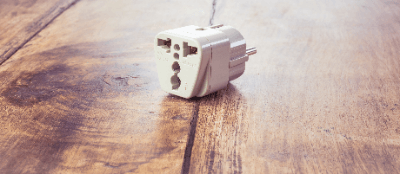What Is a Spannungswandler?
 Spannungswandlers (voltage converters) are converters that convert supply voltage to a desired voltage and output it according to the application.
Spannungswandlers (voltage converters) are converters that convert supply voltage to a desired voltage and output it according to the application.
Commonly used applications include factory automation and in-vehicle applications for voltage conversion.
In some cases, the company prepares its own converters for its own products, while in other cases, it is possible to make converters on its own after self-arrangement via a website where general-purpose parts are available, such as MISUMI.
Demand for Spannungswandlers in the automotive field is growing rapidly, especially in relation to CASE compliance.
Spannungswandler Applications
Spannungswandlers are used for the purpose of power conversion between electronic devices in xEVs in factory automation (FA) and CASE support.
Spannungswandlers can be broadly classified into four types in the current situation, and it is necessary to select the type of power converter that best suits the purpose of use and the operating environment.
The classifications of power converters are listed below.
- DC-DC: Direct current-direct current conversion
- AC-DC: AC-DC conversion
- DC-AC: DC-AC conversion
- AC-AC: AC-AC conversion
Principle of Spannungswandler
This section describes the principle of Spannungswandlers.
Spannungswandlers are generally an assembly of parts that transmit voltages and elements or devices that convert those voltages according to the application.
Voltage converters play the role of converting voltage between various devices so that the voltage that powers them can be used in an optimal manner, and are incorporated in a wide variety of machinery and equipment, including automobiles and machine tools.
As an example, the following is an example of voltage conversion between an on-board lithium-ion battery and an on-board drive motor in a hybrid vehicle.
- A drive command is received from the on-board ECU to the on-board drive motor.
- The on-board lithium-ion battery is instructed to supply power from the on-board drive motor to the on-board lithium-ion battery.
- After checking the status of the lithium-ion battery, the battery outputs 200 V and supplies power to the on-board drive motor.
- The voltage is received by DC-AC in front of the on-board drive motor, converted to voltage, and the motor is driven.
Spannungswandlers are used for all voltage conversions in the above flow.